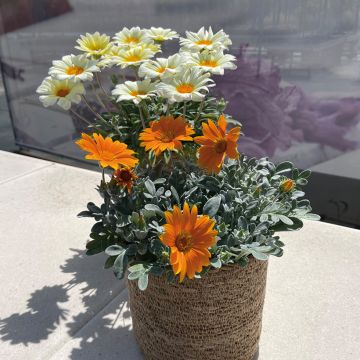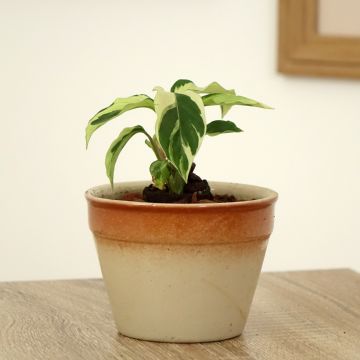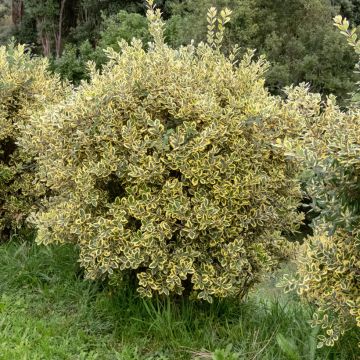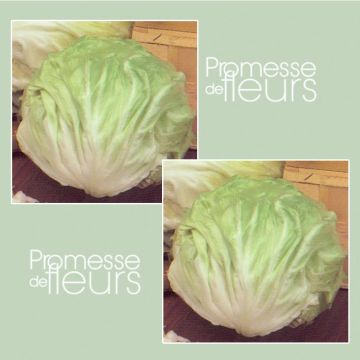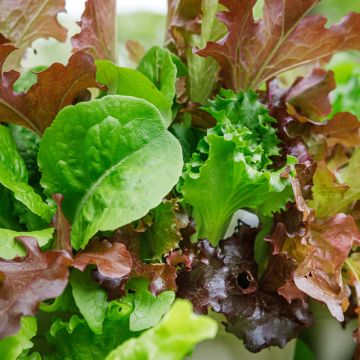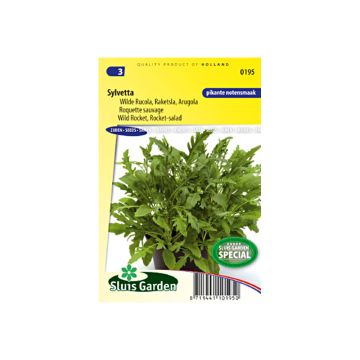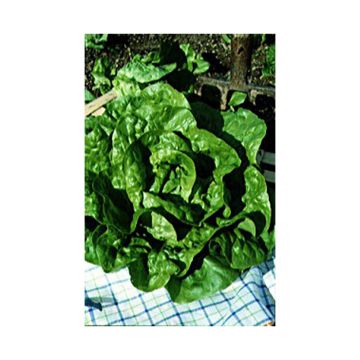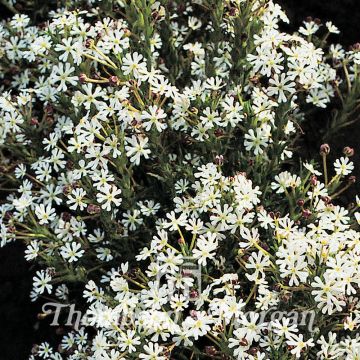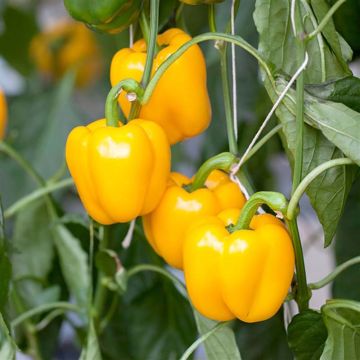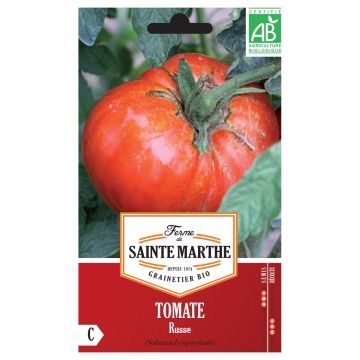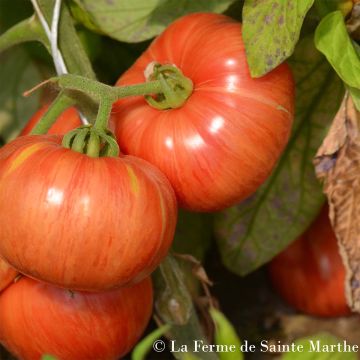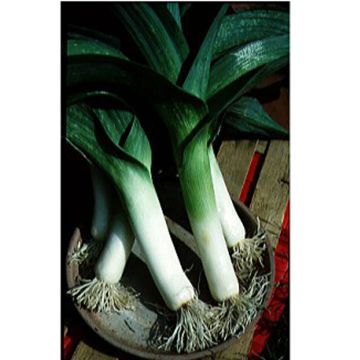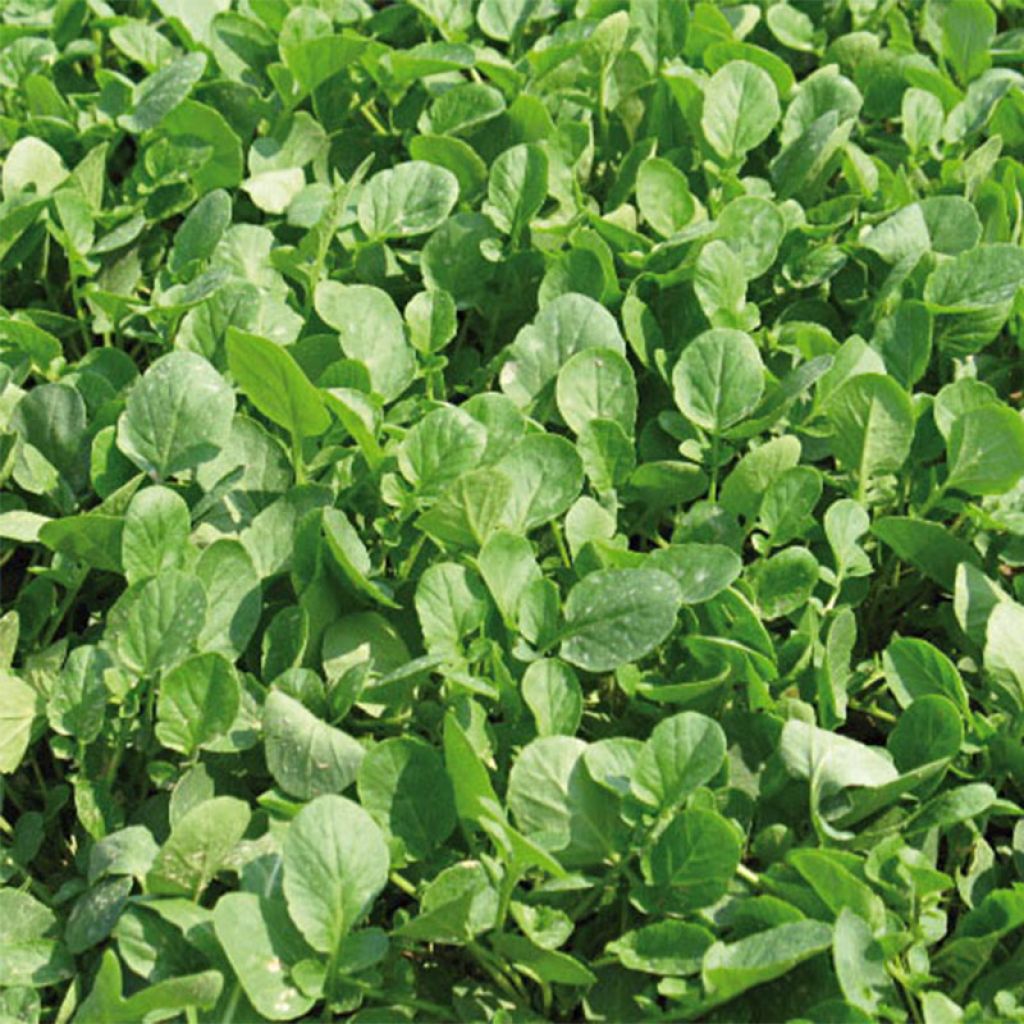

Organic Garden Cress - Barbarea verna
Organic Garden Cress - Barbarea verna
Barbarea verna
Land Cress, American Cress, Bank Cress, Black Wood Cress, Belle Isle Cress, Early Yellowrocket, Early Wintercress
Why not try an alternative variety in stock?
View all →This plant carries a 6 months recovery warranty
More information
We guarantee the quality of our plants for a full growing cycle, and will replace at our expense any plant that fails to recover under normal climatic and planting conditions.
Seed-only orders are dispatched by sealed envelope. The delivery charge for seed-only orders is €3.90.
Description
The Garden or Land Watercress is a very rewarding plant to grow, even for beginner gardeners. It offers a slightly tangy, peppery flavour that adds a kick to all spring salads. It is more commonly consumed in soups, velvety dishes, or prepared like spinach in cold weather. Its flavour is spicier than Watercress. The plants reach a height of 10 to 12 cm (4 to 5in). Sow Garden Watercress in a staggered manner from March to August to harvest from May to October and enjoy its taste.
Watercress belongs to the Brassicaceae family, like cabbage and rocket, with which it shares its tangy flavour. Part salad, part aromatic herb; Watercress is a herbaceous plant with a strong, slightly peppery taste. In the past, it was used for its medicinal properties. Still, it has become a vegetable in its own right, consumed in various forms throughout the seasons: in creamy velvety dishes in winter or in spring and summer salads. It is a plant rich in antioxidants and beta-carotene.
There are several types of Watercress, with harvests throughout the year. Some, like Fountain Watercress, are clearly aquatic, while others, like Alençon Watercress, are grown in open ground, provided that they remain well moist.
Harvest: Watercress is usually harvested three weeks after sowing and should be done regularly as it tends to go to seed. Harvest when the plants reach a height of + or - 7 cm (3in) by cutting off some of the leaves at their base.
Storage: Watercress leaves are quite delicate and wilt quickly. You can store them in the refrigerator for 2 or 3 days, with their stems in water in a jar, like a small bouquet. Freezing the leaves can be a bit tedious, so preparing some velvety dishes that can be frozen afterwards is more interesting.
Gardener's tip: It is interesting to cover and nourish the soil by adding green manure between two crops in the vegetable garden. White mustard (which, by the way, flowers yellow) is one of the most commonly used. But be careful; this mustard also belongs to the Brassicaceae family (formerly Crucifers), which is essential when considering crop rotation. Before or after growing Watercress, choose the beautiful Phacelia with its blue flowers.
Harvest
Plant habit
Foliage
Botanical data
Barbarea
verna
Brassicaceae
Land Cress, American Cress, Bank Cress, Black Wood Cress, Belle Isle Cress, Early Yellowrocket, Early Wintercress
Cultivar or hybrid
Biennial
Other Salad leaf seeds
View all →Planting and care
Sowing:
Germination of Watercress is fast, occurring in two to three days at a temperature of around 18°
Sowing is done from March to October directly in open ground, broadcast or rows spaced 25 cm (10in) apart. The soil should remain moist. After emergence, thinning should be done (which involves removing certain seedlings, usually the weaker ones) to keep one young plant every 20 cm (8in).
.
Seedlings
Care
Intended location
Similar products
Haven't found what you were looking for?
Hardiness is the lowest winter temperature a plant can endure without suffering serious damage or even dying. However, hardiness is affected by location (a sheltered area, such as a patio), protection (winter cover) and soil type (hardiness is improved by well-drained soil).

Photo Sharing Terms & Conditions
In order to encourage gardeners to interact and share their experiences, Promesse de fleurs offers various media enabling content to be uploaded onto its Site - in particular via the ‘Photo sharing’ module.
The User agrees to refrain from:
- Posting any content that is illegal, prejudicial, insulting, racist, inciteful to hatred, revisionist, contrary to public decency, that infringes on privacy or on the privacy rights of third parties, in particular the publicity rights of persons and goods, intellectual property rights, or the right to privacy.
- Submitting content on behalf of a third party;
- Impersonate the identity of a third party and/or publish any personal information about a third party;
In general, the User undertakes to refrain from any unethical behaviour.
All Content (in particular text, comments, files, images, photos, videos, creative works, etc.), which may be subject to property or intellectual property rights, image or other private rights, shall remain the property of the User, subject to the limited rights granted by the terms of the licence granted by Promesse de fleurs as stated below. Users are at liberty to publish or not to publish such Content on the Site, notably via the ‘Photo Sharing’ facility, and accept that this Content shall be made public and freely accessible, notably on the Internet.
Users further acknowledge, undertake to have ,and guarantee that they hold all necessary rights and permissions to publish such material on the Site, in particular with regard to the legislation in force pertaining to any privacy, property, intellectual property, image, or contractual rights, or rights of any other nature. By publishing such Content on the Site, Users acknowledge accepting full liability as publishers of the Content within the meaning of the law, and grant Promesse de fleurs, free of charge, an inclusive, worldwide licence for the said Content for the entire duration of its publication, including all reproduction, representation, up/downloading, displaying, performing, transmission, and storage rights.
Users also grant permission for their name to be linked to the Content and accept that this link may not always be made available.
By engaging in posting material, Users consent to their Content becoming automatically accessible on the Internet, in particular on other sites and/or blogs and/or web pages of the Promesse de fleurs site, including in particular social pages and the Promesse de fleurs catalogue.
Users may secure the removal of entrusted content free of charge by issuing a simple request via our contact form.




































